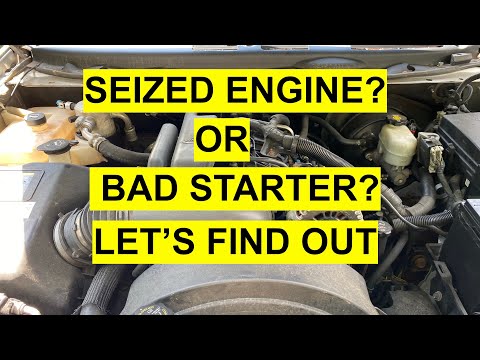
A seized engine means when the internal moving components of the engine become mechanically locked, and pistons can no longer move freely within the cylinders. As a result, the crankshaft, which is responsible for turning the engine over, will not be able to rotate. This can be caused by various factors, such as extended storage, the absence of lubrication overheating, or the presence of a foreign object in the engine.
Anytime an engine seizes, there’s a real risk that you’ve damaged the pistons, cylinders, and a host of other critical, expensive engine components. A seized or locked engine is rarely ever a cheap fix, and the cost to repair a seized engine can vary significantly.
To restore or free up a seized engine, you need to understand what caused the engine to seize up in the first place and what you might be able to do about it.
In today’s article, we’re going to have to roll up our sleeves to explore the sign of a seized engine, its potential causes, and how much they can hurt your bank account.
What Is A Seized Engine?
A locked or seized engine is a blanket term used to describe an internal combustion engine that won’t rotate when you try to start it.
When an engine seizes, other components, such as the electronics in your vehicle, might still work, but the engine itself simply does not have the power to move of its own volition.
In some cases, an engine that has seized may make strange noises, such as knocking or clunking, when an attempt is made to start it.
Most of the time, a seized engine is a serious symptom of a major engine fault. The engine block, cylinder pistons, and other major components can be badly damaged.
What Are The Symptoms Of A Seized Engine?
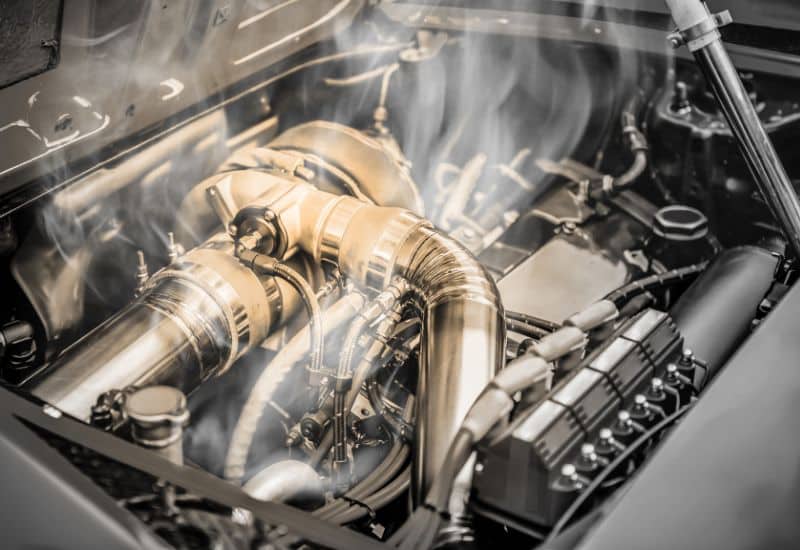
The most common symptoms of a seized engine are obvious: the engine itself has been rendered inert. This might mean it won’t turn over after sitting in storage for a long time, or it suddenly shutters, makes a loud clunk, and leaves you dead on the side of the road.
When an engine seizes, it is usually either caused by a severe mechanical fault where overheating scores the cylinders and/or fuses the piston to the side walls.
Though a seized engine might also be caused by hydro lock by driving rough a deep puddle and water getting into the engine block and wreaking havoc, an engine can lock up or seize from sitting too long in storage without running, which allows rust to build up in the cylinders.
Some common symptoms of a seized engine include:
How to Tell If Your Car’s Engine Is Seized?
The easiest way to confirm a sized engine is to try to move it through its natural rotation manually. This calls for removing the engine’s drive belt before placing a breaker bar directly on the crankshaft pulley’s bolt.
Then try to turn the pulley in the direction of the engine rotation in a clockwise motion. If your best efforts simply can’t rotate the crankshaft pulley through a full rotation, you are likely looking at a worst-case scenario in which the engine has completely seized.
With most seized engines, you also won’t be able to pull any of the pulleys or belts by hand as the internal components of the engine are unable to turn off on their own accord.
What Causes A Seized Engine?
The most common cause of a seized engine is the pistons, camshaft, and related other moving parts locking in place.
It’s often due to severe overheating caused by a lack of engine oil fusing the pistons in the cylinders.
Though water getting into the engine and rust caused by corrosion during long-term storage are also common causes of a seized engine.
Some of the more common causes of a seized engine include:
1. Low Engine Oil
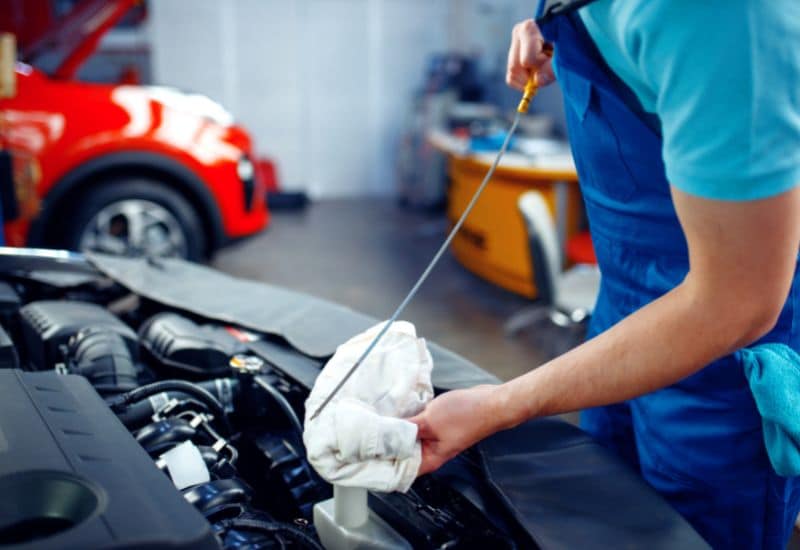
Low engine oil can cause seized engines by robbing the pistons of the lubrication; they need to slide smoothly in the cylinders. A fault in the oil system, such as a faulty oil pump, or a badly blown oil seal, ultimately leads to excessive friction in the cylinders causing the piston to fuse in place.
In a severe case, this type of severe overheating can damage the camshaft or cause major damage to other critical components the engine needs to rotate through the internal combustion cycle.
If this is the case, you’ll get an oil warning light; the car will start to show signs of overheating. You’ll also hear a loud tapping sound coming from the engine moments before the engine seizes.
2. Water or Other Fluids in the Engine
It’s possible for an engine to seize when water manages to infiltrate the engine via the air ducts or faults in the internal vacuum hoses. This condition, known as “Hydro Lock,” often manifests as severe knocking from the engine moments before it seizes.
If the RPMs were very low when the hydro lock incident occurred, you might get lucky, and the damage to the engine is minimal.
Though most of the time, the engine’s RPMs are high enough to cause severe damage throughout the engine block to cylinders, pistons, rods, and other critical components.
3. Rusted Engine Components After Long Term Storage

An engine can sometimes seize due to rust and corrosion that happens in the cylinders when it’s left too long in storage. Sometimes it can get so bad that it causes the piston rings to be fully arrested in place.
When an engine seizes due to rust and corrosion, you might go to start the car, and the internal lights might come on, but the engine won’t turn over. Try as you might; the starter motor will spin and grind, making smoke, but the seized engine won’t turn over.
4. Damaged Engine Components
Damage to engine components can also cause a seized engine due to excess wear and tear or poor maintenance habits.
Sometimes the valves, rods, or pistons can be damaged to the point that a piece breaks off; it gets in the way of other moving parts. This arrests the natural rotation causing a seized engine
This type of engine seizing sometimes seems spontaneous. People who’ve had this happen to them often recount hearing some sort of “Clang” followed by severe knocking noises and the engine locking up. Most of the time, the instrument cluster lights up like a Christmas tree as the debris in the engine wreaks chaos.
5. Severe Overheating
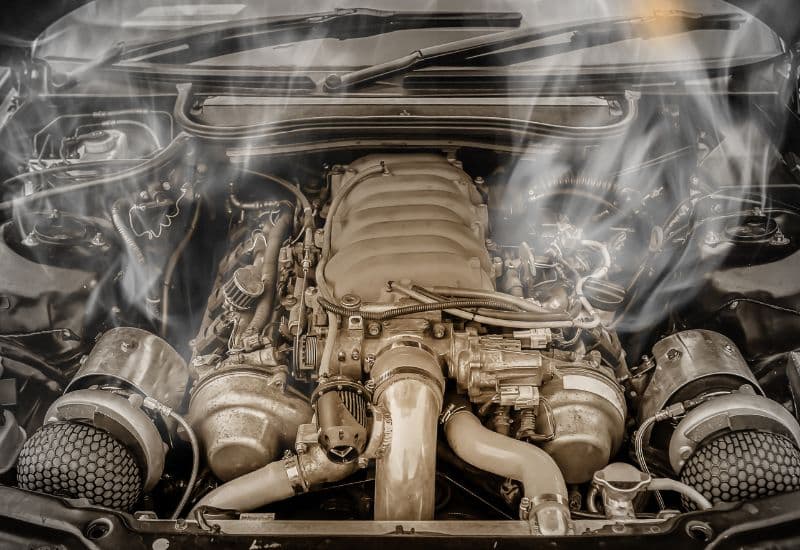
Severe overheating caused by a cooling system failure can cause a seized engine. This allows heat to build up rapidly, causing the pistons to expand, damaging the cylinder walls, and potentially fusing them. This also comes with a high risk of suffering a cracked head.
Some coolant system failures are immediate, and some cooling system failures are gradual, sneaking up on you. If you notice your engine temperature gauge skyrocketing. It’s best to pull over and let it cool rather than risk severe damage from a seized engine.
6. Timing Belt or Cam Shaft Failure
A timing belt of camshaft failure can also cause a seized engine. This can cause the pistons to hit the valves. This causes severe engine damage and can seize up the engine in a matter of moments.
In a scenario like this, you will often hear a sudden and increasing knocking sound. It’s immediately followed by a flashing check engine light right before the engine seizes.
Can a Seized Engine be Fixed?

Fixing a seized engine is very hard, if not impossible. The first step is to confirm that the engine is indeed seized by trying to rotate the engine manually, as we discussed earlier. This will eliminate a starter problem, and you can start to face the inevitable.
If you are dealing with a minor case of the hydro lock caused by driving through a deep-water puddle, and the engine was at low revs, you might be able to express the water from the cylinders on your own. However, this is only possible in minor cases of hydro locking.
If the engine is seized due to sitting in storage for too long, a mechanic might be able to get it moving again. This is rarely the sort of thing you can evaluate on your own.
Can a Seized Engine Be Rebuilt?

It might be possible to rebuild a seized engine if it is locked up due to cylinder corrosion. Though pretty much all other seized engine incidents are too severe to be an easy fix. The debate then turns to whether or not to have the engine rebuilt, replaced, or to write the car off completely.
If the damage to the seized engine was modest, it might be possible to rebuild it rather than have it replaced. Though the cost here can still be astronomical, it might be wiser to write the car off altogether.
How Much Does It Cost To Fix A Seized Engine?
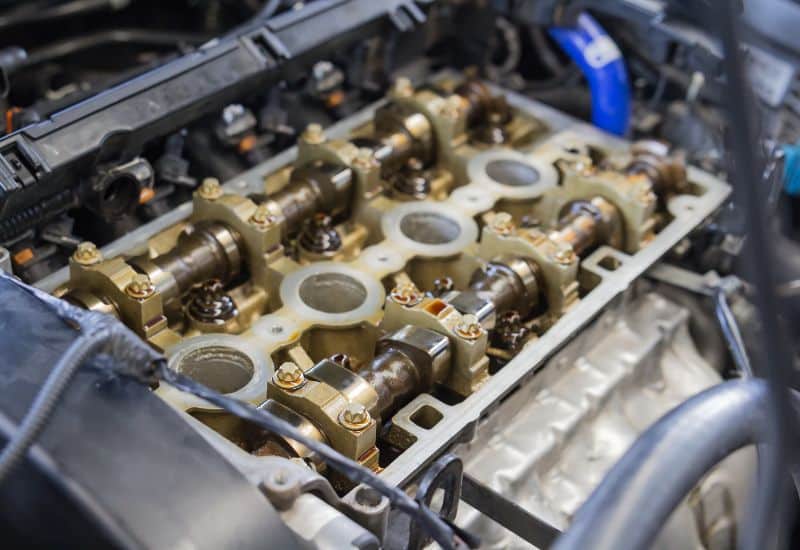
The cost to fix a seized engine starts at $500 and skyrockets from there. Variables like what caused the engine to seize, the damage to the pistons, cylinders, valves, and other mechanical failures will all drive up the cost of moving the engine again.
Most of the time, the cost to fix a seized engine caused by severe overheating or internal damage will range from $3,500 to as much as $10,000. For a minor case of the hydro lock, where the pistons were arrested, but no severe damage was done to critical engine components, you might be able to get away with a $500 repair bill.
A mechanic must first evaluate the damage’s extent to fix a seized engine caused by minor corrosion while sitting too long in storage. This inspection alone will cost around $500. Then the repair bill to get the seized engine moving again will start at $750 to $1,000 and can rise dramatically from there.
FAQs About Seized Engines
Can you fix an engine that is seized?
You might be able to fix an engine that seized due to a minor hydro lock incident or minimal corrosion from long-term storage. A mechanic could fix a seized engine for under $1,000. Otherwise, you’re generally looking at either having the seized engine replaced or rebuilt.
How do you free up a seized engine?
Freeing up a seized engine starts with pulling the spark plugs and filling the cylinders with oil. Then cover the cylinders to prevent dust from getting in, and let the car sit for two to three days. At that point, you might be able to get the engine to turn by attaching a breaker bar to the crankshaft’s pulley bolt.
If it finally frees up the seized engine, you can continue cranking with the breaker bar to express the excess oil. Once the cylinders are lubricated but clear of large oil deposits, you can install fresh spark plugs and try to start the engine.
This is a bush fix that tends to be used more for farm equipment with a carburated engine than, say, a performance-tuned, fuel-injected one.
How much is my car worth with a seized engine?
You can expect your car to be worth $3,000 to $5,000 less than the book value with a non-functioning engine. If your car is normally booked at $12,000, you can expect to get around $7,000 to $9,000.
If your car’s book value is less than $5,000, it becomes tough to sell it, trade it into a dealership or sell it at auction, as the buyer already knows they’ll have to sink about that much into rebuilding or replacing the engine.
Your fastest, least profitable option at that point is to sell it for scrap, where you will get less than $500. You can sell it to a company that outsources vehicles, and you might get anywhere from $500 to $750 for it.
Your best option for making the most money back on a written-off car with a seized engine is to part it yourself. Though the tradeoff here is the cost of your time.
Is it worth it to replace an engine?
The cost of completely replacing a seized engine can range from $3,500 to $5,000 or more. For many people staring at a rebuild or major repair of a seized engine, it often makes more sense to replace the engine completely.
This comes with the peace of mind of knowing that you’re starting with a fresh slate. However, any additional damage done to other components might also be a factor.
Can you trade in a car with a seized engine?
You can usually trade in a car with a seized engine but at a steeply reduced price. Like a lot of dealership trade-in values, you will get a little more for your trade-in if you are already purchasing a new high-priced vehicle from the dealer.
Conclusion
A seized engine is a major problem that can’t be taken lightly. Most of the time, the engine is a total loss, especially if it seizes up due to a lack of engine oil, a coolant system failure, or severe overheating.
Sometimes a minor case of hydro lock that occurred at low RPMs or a minor case of corrosion in the cylinders during long-term storage can be fixed. However, this is the exception rather than the rule.
Most of the time, the cost of fixing or rebuilding a seized engine is on par with the cost of having the engine completely replaced. Often the deciding factor is if the seizing event caused damage to other critical engine components or the vehicle’s drive train.
One way or the other, you’re likely looking at a mechanic’s bill that starts at $3,500 to $5,000. The good news is that you can sell or trade in a car with a seized engine. However, any potential buyer will easily knock $3,000 or more off the book value.

Written By
Jason Farrell
Jason Farrell is a certified master technician, the editor of Mechanic’s Diary in Pittsburgh, Pennsylvania. He is ASE (Automotive Service Excellence) certified and earned a Bachelor’s Degree in Automotive Technology from Pittsburg State University. With nearly 18 prior years of experience in the automotive field, he has extensive knowledge about Domestic, European, and other foreign makes and models of cars and light trucks. Jason’s experience working as a technician and service manager at dealerships, gave him the experience and know-how of most aspects of inspection, diagnosis, and repair from engine and drivability to electrical, HVAC, brakes, steering and suspension and everything in between.

